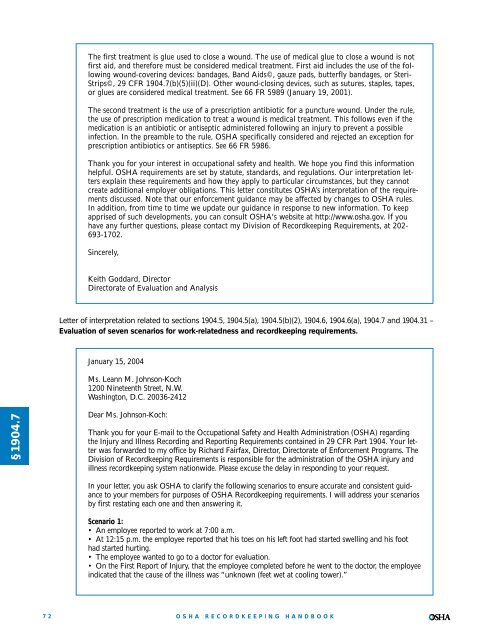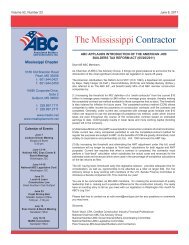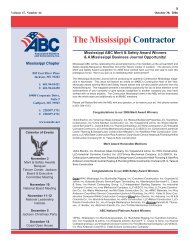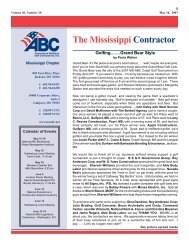The first treatment is glue used to close a wound. The use of medical glue to close a wound is notfirst aid, and therefore must be considered medical treatment. First aid includes the use of the followingwound-covering devices: bandages, Band Aids©, gauze pads, butterfly bandages, or Steri-Strips©, 29 CFR 1904.7(b)(5)(ii)(D). Other wound-closing devices, such as sutures, staples, tapes,or glues are considered medical treatment. See 66 FR 5989 (January 19, 2001).The second treatment is the use of a prescription antibiotic for a puncture wound. Under the rule,the use of prescription medication to treat a wound is medical treatment. This follows even if themedication is an antibiotic or antiseptic administered following an injury to prevent a possibleinfection. In the preamble to the rule, <strong>OSHA</strong> specifically considered and rejected an exception forprescription antibiotics or antiseptics. See 66 FR 5986.Thank you for your interest in occupational safety and health. We hope you find this informationhelpful. <strong>OSHA</strong> requirements are set by statute, standards, and regulations. Our interpretation lettersexplain these requirements and how they apply to particular circumstances, but they cannotcreate additional employer obligations. This letter constitutes <strong>OSHA</strong>’s interpretation of the requirementsdiscussed. Note that our enforcement guidance may be affected by changes to <strong>OSHA</strong> rules.In addition, from time to time we update our guidance in response to new information. To keepapprised of such developments, you can consult <strong>OSHA</strong>'s website at http://www.osha.gov. If youhave any further questions, please contact my Division of <strong>Recordkeeping</strong> Requirements, at 202-693-1702.Sincerely,Keith Goddard, DirectorDirectorate of Evaluation and AnalysisLetter of interpretation related to sections 1904.5, 1904.5(a), 1904.5(b)(2), 1904.6, 1904.6(a), 1904.7 and 1904.31 –Evaluation of seven scenarios for work-relatedness and recordkeeping requirements.January 15, 2004Ms. Leann M. Johnson-Koch1200 Ni<strong>net</strong>eenth Street, N.W.Washington, D.C. 20036-2412§1904.7Dear Ms. Johnson-Koch:Thank you for your E-mail to the Occupational Safety and Health Administration (<strong>OSHA</strong>) regardingthe Injury and Illness Recording and Reporting Requirements contained in 29 CFR Part 1904. Your letterwas forwarded to my office by Richard Fairfax, Director, Directorate of Enforcement Programs. TheDivision of <strong>Recordkeeping</strong> Requirements is responsible for the administration of the <strong>OSHA</strong> injury andillness recordkeeping system nationwide. Please excuse the delay in responding to your request.In your letter, you ask <strong>OSHA</strong> to clarify the following scenarios to ensure accurate and consistent guidanceto your members for purposes of <strong>OSHA</strong> <strong>Recordkeeping</strong> requirements. I will address your scenariosby first restating each one and then answering it.Scenario 1:• An employee reported to work at 7:00 a.m.• At 12:15 p.m. the employee reported that his toes on his left foot had started swelling and his foothad started hurting.• The employee wanted to go to a doctor for evaluation.• On the First Report of Injury, that the employee completed before he went to the doctor, the employeeindicated that the cause of the illness was “unknown (feet wet at cooling tower).”72<strong>OSHA</strong> RECORDKEEPINGHANDBOOK
• When answering the doctor’s question: “How did injury occur?” the employee answered that the onlything he could think of was that his feet were wet all the previous day due to work in the morning at acooling tower. The cooling tower water is treated to remove bacteria and then used in process operationsin the plant.• The doctor described the illness/injury as foot edema/cellulitis.• The doctor also prescribed the injury as an occupational disease, prescribed an antibiotic, and theemployee missed one day of work.• The company sent the employee to a second doctor who said to continue using the antibiotic.• Neither doctor could state conclusively that the foot edema/cellulitis was or was not due to theemployee’s feet being wet due to work at the cooling tower.• Neither doctor is a specialist in skin disorders.• During an incident review at the site, the employee again said he did not know if his feet being wet allday the previous day caused the injury/illness.• The employee also stated that he had not worn the personal protective equipment, rubber boots, prescribedfor this task.The company determined that this injury/illness is not work-related (did not occur in the course of or asa result of employment), since neither physician nor the employee can state with certainty that theinjury/illness was caused by the employee’s feet being wet all day due to work at the cooling tower. Sincethe injury/illness was determined to not be work-related, then the company deemed the incident nonrecordable.Response: A case is work-related if it is more likely than not that an event or exposure in the work environmentwas a cause of the injury or illness. The work event or exposure need only be one of the causes; it notneed to be the sole or predominant cause. In this case, the fact that neither the physician nor the employeecould state with certainty that the employee’s edema was caused by working with wet feet is not dispositive.The physician’s description of the edema as an “occupational disease,” and the employee’s statementthat working with wet feet was “the only thing he could of” as the cause, indicate that it is more likelythan not that working with wet feet was a cause. The case should be recorded on the <strong>OSHA</strong> 300 Log.Scenario 2:An employee must report to work by 8:00 a.m.• The employee drove into the company parking lot at 7:30 a.m. and parked the car.• The employee exited the car and proceeded to the office to report to work.• The parking lot and sidewalks are privately owned by the facility and both are within the propertyline, but not the controlled access points (i.e., fence, guards).• The employee stepped onto the sidewalk and slipped on the snow and ice.• The employee suffered a back injury and missed multiple days of work.The company believes that the employee was still in the process of the commute to work since theemployee had not yet checked in at the office. Since a work task was not being performed, the site personneldeemed the incident not work-related and therefore not recordable.Response: Company parking lots and sidewalks are part of the employer’s establishment for recordkeepingpurposes. Here, the employee slipped on an icy sidewalk while walking to the office to report forwork. In addition, the event or exposure that occurred does not meet any of the work-related exceptionscontained in 1904.5(b)(2). The employee was on the sidewalk because of work; therefore, the case iswork-related regardless of the fact that he had not actually checked in.§1904.7Scenario 3:The employee described in Scenario 2 missed 31 days of work due to the back injury.• On day 31, the doctor provided a release for returning to work.• The next morning (day 32), when the employee was due to report to work, the employee stated thathis back was hurting, and the employee did not report to work.• The employee scheduled a doctor’s appointment, with the same doctor, and visited the doctor on day 33.• The doctor issued a statement stating that the employee was not able to return to work.Since the employee was released to return to work, the company does not believe it has to count theintervening two days on the <strong>OSHA</strong> log.<strong>OSHA</strong> RECORDKEEPINGHANDBOOK73
- Page 1 and 2:
www.osha.govOSHARecordkeepingHandbo
- Page 3 and 4:
OSHARecordkeeping HandbookThe Regul
- Page 5 and 6:
ContentsRecordkeeping HandbookRoadm
- Page 7 and 8:
Section 1904.40Providing records to
- Page 9 and 10:
Section 1904.0Purpose(66 FR 6122, J
- Page 11 and 12:
Section 1904.1Partial exemption for
- Page 13 and 14:
Section 1904.2Partial exemption for
- Page 15 and 16:
employees, to OSHA within 8 hours (
- Page 17 and 18:
Partial Exemptions for Employers Un
- Page 19 and 20:
Section 1904.4Recording criteria(66
- Page 21 and 22:
Section 1904.5Determination of work
- Page 23 and 24:
(b)(7) How do I decide if a case is
- Page 25 and 26:
well, including providing informati
- Page 27 and 28:
This exception, which responds to i
- Page 29 and 30: or she is in the work environment a
- Page 31 and 32: have occurred but for the occupatio
- Page 33 and 34: considered work-related. If an empl
- Page 35 and 36: Question 5-12. Is work-related stre
- Page 37 and 38: • The doctor described the illnes
- Page 39 and 40: Scenario 7:• A site hired numerou
- Page 41 and 42: Letter of interpretation related to
- Page 43 and 44: These principles should be applied
- Page 45 and 46: The problem with the response is tw
- Page 47 and 48: Section 1904.6Determination of new
- Page 49 and 50: the Guidelines stated that “the a
- Page 51 and 52: estricted work. If the case is a pr
- Page 53 and 54: • The doctor also prescribed the
- Page 55 and 56: • The employees were under the di
- Page 57 and 58: Section 1904.7General recording cri
- Page 59 and 60: (iii) Do I have to record restricte
- Page 61 and 62: of the length of time the employee
- Page 63 and 64: then result in days away from work
- Page 65 and 66: A partial day of work is recorded a
- Page 67 and 68: In all other respects, the final ru
- Page 69 and 70: ments. The Agency believes that the
- Page 71 and 72: e recorded because it will require
- Page 73 and 74: However, episodes of fainting from
- Page 75 and 76: care professional, he or she may al
- Page 77 and 78: “Other simple means” of removin
- Page 79: For purposes of OSHA recordkeeping
- Page 83 and 84: Response: In the recordkeeping regu
- Page 85 and 86: Letter of interpretation related to
- Page 87 and 88: Section 1904.8Recording criteria fo
- Page 89 and 90: caused by contaminated needles and
- Page 91 and 92: Section 1904.9Recording criteria fo
- Page 93 and 94: Section 1904.10Recording criteria f
- Page 95 and 96: hearing loss case that is not relat
- Page 97 and 98: average of 10 decibels or more at 2
- Page 99 and 100: argued that because the function of
- Page 101 and 102: occurs, and where hearing loss can
- Page 103 and 104: cases in their workplace via analys
- Page 105 and 106: March 4, 2004Mr. Carl O. Sall, CIHD
- Page 107 and 108: When the professional evaluating th
- Page 109 and 110: (2) May I line-out or erase a recor
- Page 111 and 112: Section 1904.12Recording criteria f
- Page 113 and 114: These new statistics would add only
- Page 115 and 116: Sections 1904.13 - 1904.28 Reserved
- Page 117 and 118: two lines of the OSHA 300 Log to de
- Page 119 and 120: which replace the OSHA 200 and 101
- Page 121 and 122: different types of occupational ill
- Page 123 and 124: OSHA 301 form. These data are usefu
- Page 125 and 126: LETTERS OF INTERPRETATION: Section
- Page 127 and 128: Question 2: Under 29 CFR Section 19
- Page 129 and 130: and has adopted language in the fin
- Page 131 and 132:
Section 1904.31Covered employees(66
- Page 133 and 134:
label assigned to a worker is immat
- Page 135 and 136:
These workers should be evaluated j
- Page 137 and 138:
Response: A case is work-related if
- Page 139 and 140:
Response: Section 1904.31 states th
- Page 141 and 142:
Thank you for your interest in occu
- Page 143 and 144:
year covered by the summary. The su
- Page 145 and 146:
2. Number of employees and hours wo
- Page 147 and 148:
LETTERS OF INTERPRETATION: Section
- Page 149 and 150:
Section 1904.33Retention and updati
- Page 151 and 152:
June 23, 2003Mr. Edwin G. Foulke, J
- Page 153 and 154:
Section 1904.34Change in business o
- Page 155 and 156:
PREAMBLE DISCUSSION: Section 1904.3
- Page 157 and 158:
Incident Report (Forms 300 and 301,
- Page 159 and 160:
workers’ compensation claim. See
- Page 161 and 162:
LETTERS OF INTERPRETATION: Section
- Page 163 and 164:
Letter of interpretation related to
- Page 165 and 166:
Question 3: Using the facts in Ques
- Page 167 and 168:
Section 1904.37State recordkeeping
- Page 169 and 170:
tion, require employers to report f
- Page 171 and 172:
(5) If I receive a variance, may th
- Page 173 and 174:
Section 1904.39Reporting fatalities
- Page 175 and 176:
gation. Therefore, the final rule d
- Page 177 and 178:
Section 1904.40Providing records to
- Page 179 and 180:
ness. The government inspector may
- Page 181 and 182:
Response: The controlling employer
- Page 183 and 184:
FREQUENTLY ASKED QUESTIONS: Section
- Page 185 and 186:
OSHA and the BLS have worked togeth
- Page 187 and 188:
provide copies of the retained reco
- Page 189 and 190:
FREQUENTLY ASKED QUESTIONS: Section
- Page 191 and 192:
Section 1904.46Definitions(66 FR 61
- Page 193 and 194:
of business information. For exampl
- Page 195 and 196:
inconvenience associated with keepi
- Page 197 and 198:
skin disease, respiratory disorder,
- Page 199 and 200:
Question 2: Under 29 CFR Section 19
- Page 201:
www.osha.gov







